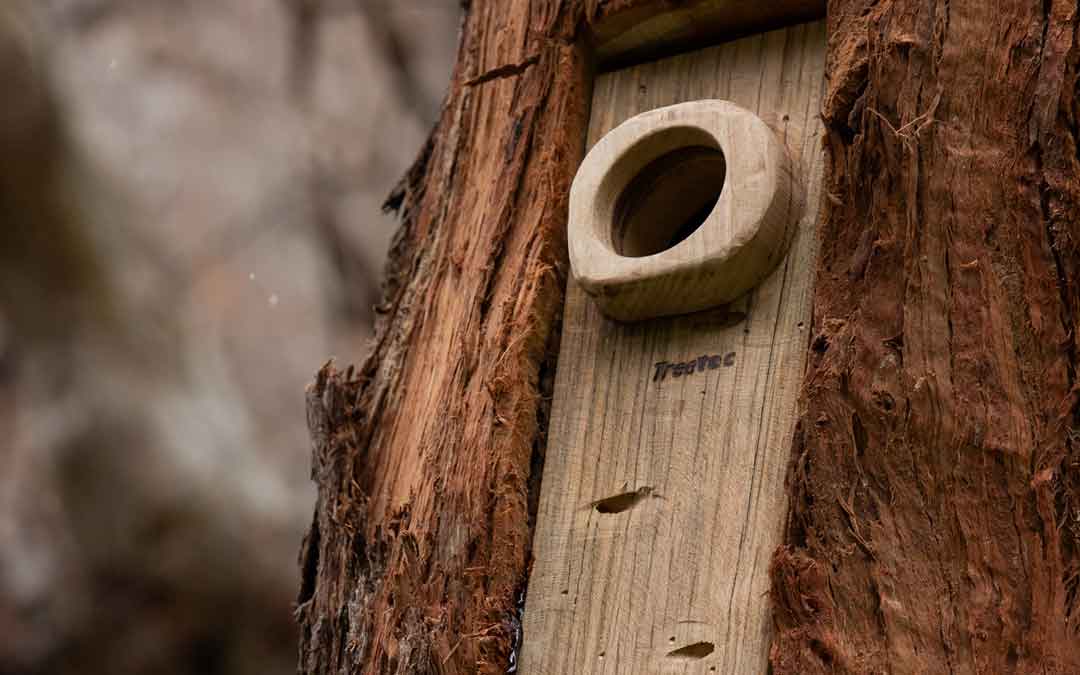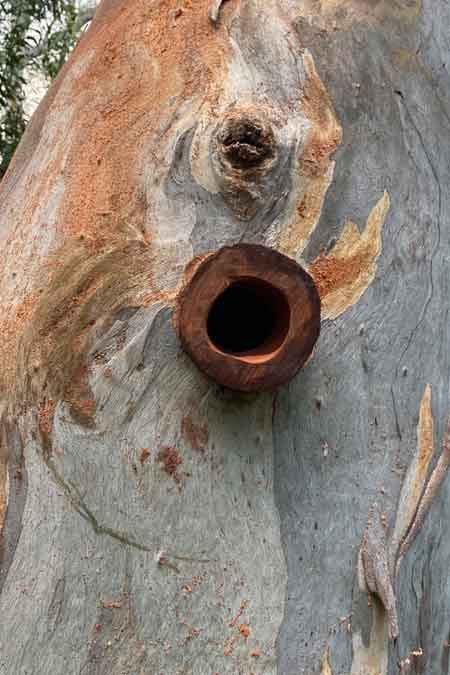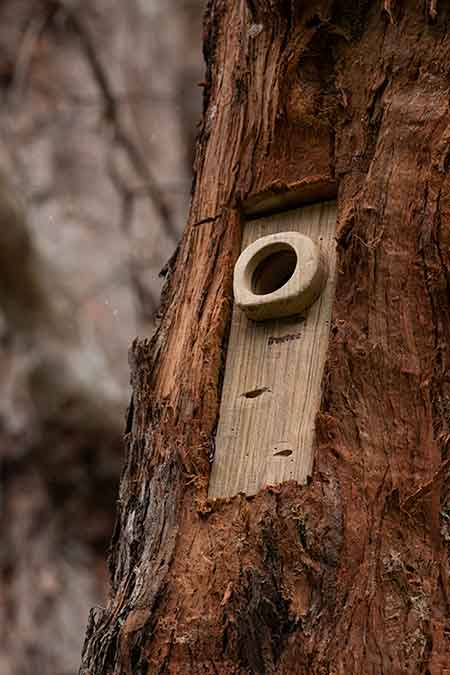Creating hollows for wildlife with chainsaws

Many of our native birds and animals rely on tree hollows for their survival. Without them they can’t find shelter to raise their young.
Due to a lack of big old hollow-bearing trees, Banyule City Council have recently funded the installation of some artificial hollows in trees in Rosanna Parklands. They have specially been designed for Pardalotes, Musk Lorikeets, Little Lorikeets and Sugar Gliders.
You can watch Banyule City Council’s video below, and read on for more information about other techniques being used in Australia to create artificial hollows.
Hollows take a really long time to form naturally
Pre-colonisation, finding hollows wasn’t a problem for animals. There were millions more trees and lots of them – especially eucalypts – form hollows as they age. Some take a very long time though. For example, river red gums (Eucalyptus camaldulensis) which are local to our area and many other parts of our country, take at least a hundred years to naturally form hollows. They then provide hollows usually for centuries, even after the tree is long dead. That is why you can often see dead trees left standing but with dangerous limbs removed. There’s a good example of this at Binnak Park in Watsonia North near the playground. Even when trees fall to the ground, their hollows form important habitat for ground dwelling species.
Nowadays, it’s a lot tougher to find a hollow if you are a bird or animal. The vast majority of hollow-bearing trees have been cleared to make way for houses and roads, been chopped up for firewood or harvested for timber.
Nest boxes are a common sight, but they are an inferior substitute for a hollow inside a tree. This is because they:
- are easily overrun by unwanted occupants or pest species (i.e. rats, mynas, starlings, European honey bees)
- provide little insulation against the temperature extremes (an increasing problem as climate change impacts increase)
- need regular maintenance
- have a relatively short life span (usually only about 10 years).
Replanting huge amounts of trees now isn’t enough to overcome the massive shortfall of hollows. It will take many decades or longer before we have trees old enough to form natural hollows, and our native wildlife can’t wait that long.
An alternative approach being used by ecologists and land managers is creating artificial hollows in trees not yet old enough to have formed natural hollows, or in dead but still standing trees.
There are 4 main techniques being used to create artificial hollows in Australia:
- Chainsaw carving of narrow door hollows in living or dead trees (as undertaken by Treetec in Rosanna Parklands and being trialled for the critically endangered Leadbeater Possums in the Central Highlands)
- Mechanical cavity drilling with ‘Hollowhog’ tool, which allows a large cavity to be drilled through only a small entrance hole within a living or dead tree (also created by Treetec).
- Faceplate hollows are when a large cavity is cut into a tree with a chainsaw and a pre-fabricated faceplate with a pre-drilled entrance hole is installed. This method is only suitable for use in dead trees.
- Installation of thermally stable modular plastic nest boxes designed by a company called Habitech.

Hollowhog artificial hollow

Narrow door chainsaw artificial hollow by Treetec
While naturally-formed hollows are always best, artificial hollows seem to be proving a good alternative.
If you’d like to see some huge remnant (pre-colonial) river red gums with naturally-formed hollows, some local places you can visit include
- Ernst Jones Reserve in Springthorpe Estate in Macleod
- the gardens above the cafe at Heide
- the Plenty River Trail through Banyule Flats along the ridgeline above the Viewbank Silos
As with all wildlife spotting, dawn and dusk provide the best chances of seeing the hollows being used.
